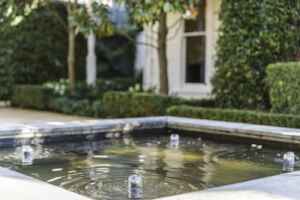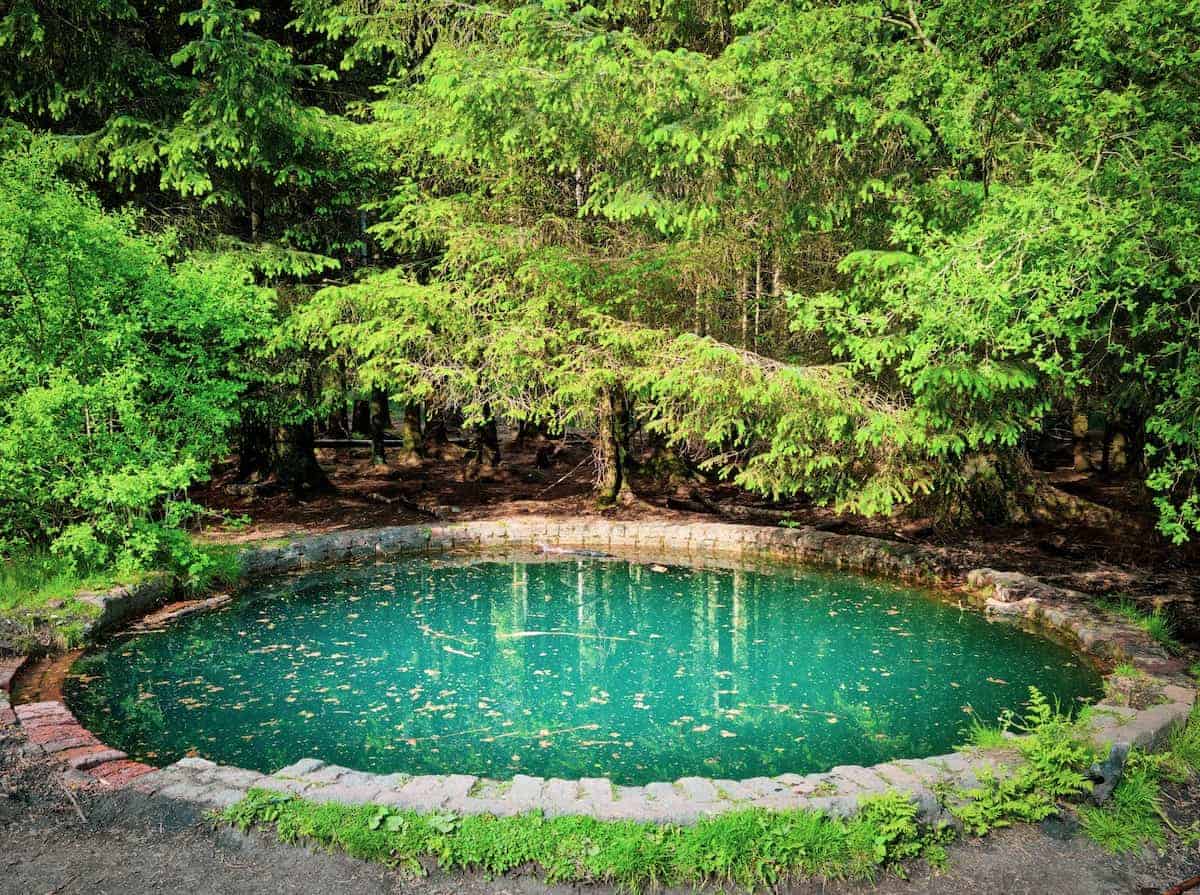Landscape Your Front Yard Pond Easily
What is the best idea for landscaping around your front yard pond? The best idea is to landscape around it in a way that makes it look natural and blends in with the surroundings. You can use plants, rocks, and other materials to achieve this look. I recommend using plants that will provide shade for the pond since ponds can get very hot in the summer sun.
Landscaping has always been something that I enjoy. When I moved into my home, there was an ugly cement pond in the front yard that needed some sprucing up. I wanted to landscape it in a way that would make it more inviting and also more functional, so I did some research on new landscaping ideas.
Many might think landscaping around a pond is simple, but there is more to it than just throwing down some plants. If you want to make your pond look great and also be functional, then keep reading to follow these five easy tips.
5 Great Ideas for Landscaping Your Front Yard Pond
Here are several great ideas for how to add landscaping around your front yard pond!
1. Add A Rock Garden
Adding a rock garden to the area around your pond is a great way to make it look natural and also provide some functionality.
You can use rocks to help create a natural-looking border for your pond, and you can also use them to create little islands in the pond. If you have fish or other water creatures in your pond, then adding rocks will give them places to hide and play.
2. Use Edging To Define The Pond
Using edging to define the pond is another great way to make it look natural. You can use any type of edging that you want, but I recommend using something that will blend in with the surroundings.
Stone or brick are great options because they both look very natural. You can use edging to separate the pond from the rest of the yard, or you can use it to create a border around the pond.
3. Add Some Plants
Adding plants to your landscaping is a great way to make your pond looks natural and inviting. You can use a variety of different plants, but I recommend using plants that will provide shade for the pond.
This is especially important in the summer months when the sun can heat up the water. Be sure to choose plants that will not grow too tall so they do not block the view of the pond.
4. Use Waterfalls And Fountains
Waterfalls and fountains are a great way to add some beauty and functionality to your front yard pond. They help to aerate the water and also provide a great place to sit and relax.
You can build waterfalls out of rocks or you can even find some great pre-made ones that attach to the side of your pond. Fountains look great as well, but they do cost more than a simple waterfall.
5. Add Some Extras
Finally, you may want to add some extras to your landscaping around the front yard pond. This could include things like bridges, statues, and any other decorations that go along with the theme of the area around your pond.
It is usually pretty easy to find matching decorations for ponds and pools at home improvement stores and garden supply stores. Of course, if you don’t want to invest in special decor, then you can always use items from around the house.
When it comes to landscaping a front yard pond, there are a lot of great options to choose from. These five tips are just a starting point, but they will help you get started on creating a beautiful and functional pond area. So get creative and have some fun with it!
How to Create a Rock Garden Around Your Pond
Adding a rock garden around your pond is a great way to improve the look of your landscape and add some extra functionality. Not only will a rock garden help to disguise the edges of your pond, but it can also provide a place for birds and other wildlife to congregate.
If you’re not sure how to create a rock garden around your pond, here are a few tips:
- Choose rocks that are around the same size so that they will be easy to stack and won’t slide around.
- Make sure that the rocks are heavy enough so that they won’t move around in high winds or rain.
- Try to find rocks that have interesting shapes and textures so that they will add visual interest to your garden.
- If you’re creating a waterfall or other feature, make sure that the rocks are positioned correctly so that they will be stable.
- Start by positioning the largest rocks in the center of the garden.
- Work around the outside of the garden, adding smaller rocks until you reach the edge.
- Make sure that each rock is securely stacked on top of the others.
- If you’re creating a waterfall or other feature, make sure that the water will be able to flow freely through the rocks.
Once your rock garden is complete, all you need to do is add some plants.
Best Plants to Landscape Your Pond
There are many different types of pond plants and there is not one plant type that can be categorized as the best. However, to landscape your pond it is important to know what kinds of pond plants grow well within certain environmental conditions.
Some great kinds of flowers include Vallisneria, Sagittaria, Lobelia cardinalis, Nymphaea (water lilies), Najas (fanwort), and Nuphar (yellow water lily).
These types of pond plants will thrive in sunny and partially shady areas and provide a beautiful landscape for any pond owner. Another plus about these particular types of flowers is they do not require much maintenance. However, they might need an annual re-planting depending on the depth and location around the pond.
The best plants to landscape your pond are the ones that will survive, so it is important to know what types of pond plants do well in certain climates.
While this list can be used as a guide, there are many other types of pond plants that might thrive in your area. Make sure to consult with a local specialist to get the most accurate information for your pond. It is important to landscape your pond with the right plants, so make sure you do your research!
Is a Front Yard Pond Worth It?
If you’re considering buying a home with a pond already in the front yard, you may want to think about if it’s worth it. Ponds can be beautiful and may add more value to your home, but there are some things to consider before diving into an expensive project that just doesn’t work.
Front ponds or ponds, in general, can be very beneficial for your surrounding wildlife and make great conversation pieces when guests visit your backyard.
Ponds provide homes for insects such as mosquitoes which eat other mosquitoes; dragonflies; bees; wasps; ladybugs; butterflies; frogs; turtles; and fish (rainbow trout is most common). All of these animals play a role in keeping ponds clean and healthy by eating decaying matter and algae that can build up over time.
But ponds also come with some risks, namely: ponds can be a breeding ground for mosquitoes; they can be a drowning hazard for small children and pets; they can be difficult and expensive to maintain properly; and they can attract raccoons, skunks, and other critters that may dig in your yard or steal your fish.
Before you decide if a front yard pond is worth it for your home, carefully weigh the pros and cons to see if it’s the right decision for you. If you decide a pond is right for you, be sure to take all necessary precautions to protect yourself, your family, and your property. ponds can provide beauty, serenity, and value to your home.
Do Ponds Need Sunshine or Shade?
Sunlight is important for ponds because it provides energy to plants and animals who live there. It also helps keep ponds clear of algae through photosynthesis, which filters out pollutions such as nitrates and phosphates from ponds.
At night, ponds need shade to protect fish and other pond life that would be unable to survive in open water during harsh conditions such as those present at midday or particularly windy periods during the day when turbulence could be harmful.
Overall, ponds need a balance of sunlight and shade to thrive and support rich biodiversity. Too much sunlight can cause problems with algae growth, while too little will make it difficult for plants and animals to survive. The right amount of shade at the right time is key!
In Conclusion
While this list can be used as a guide, there are many other types of pond plants that might thrive in your area. Make sure to consult with a local pond specialist to get the most accurate information for your pond. It is important to landscape your pond with the right plants, so make sure you do your research!
Remember, the best plants to landscape your pond are the ones that will survive in your climate! Consult with a local pond specialist for more information.

